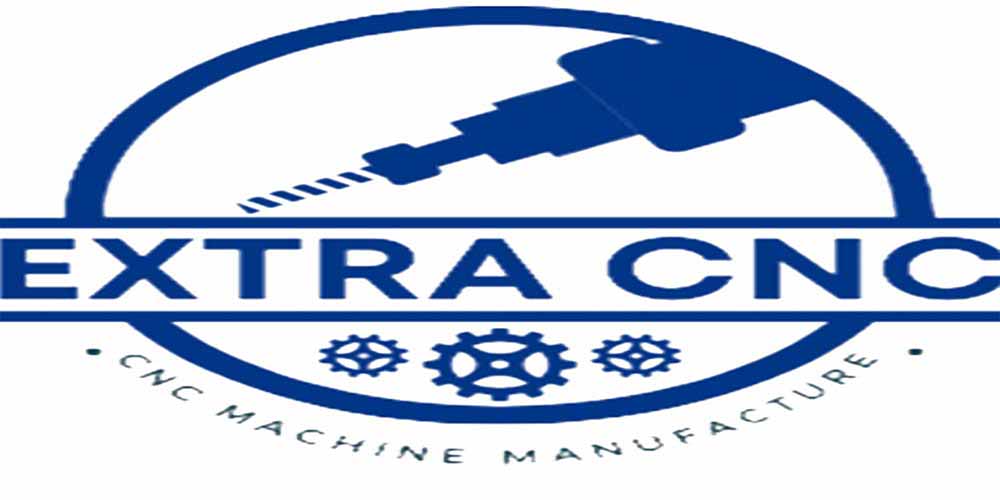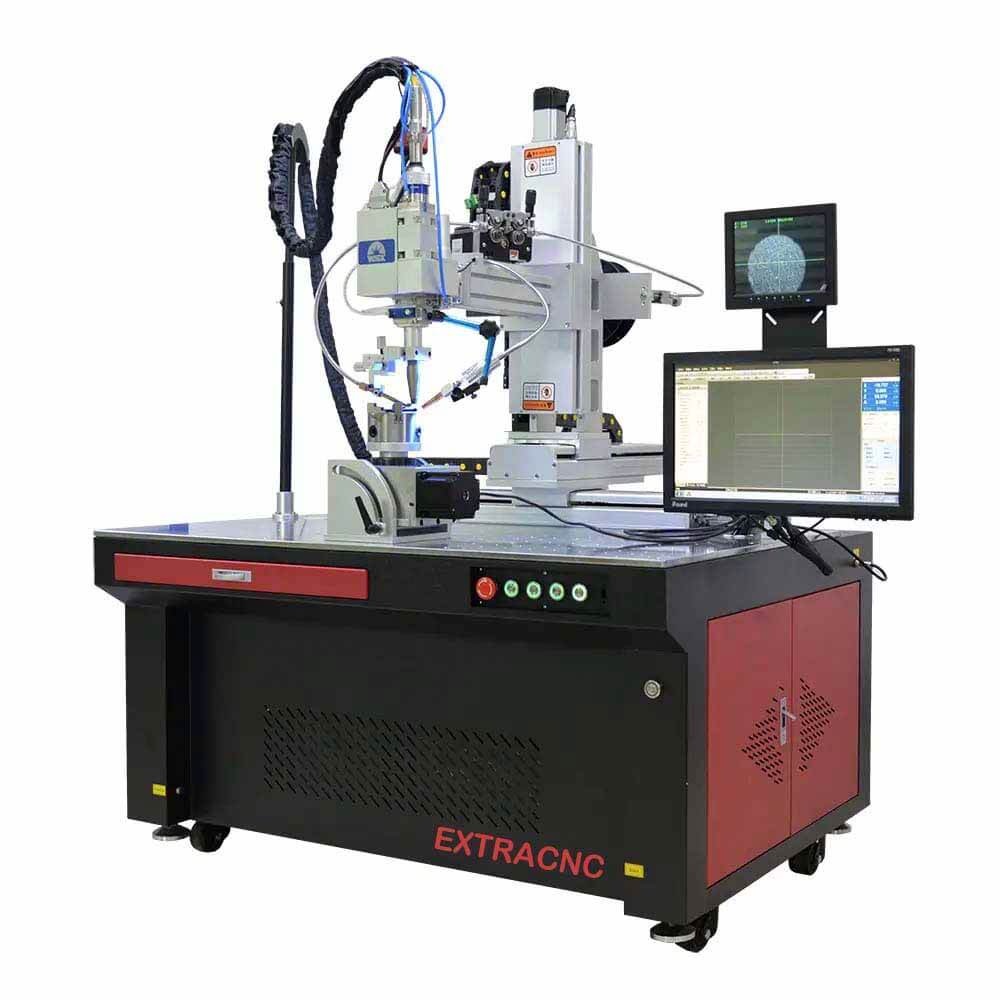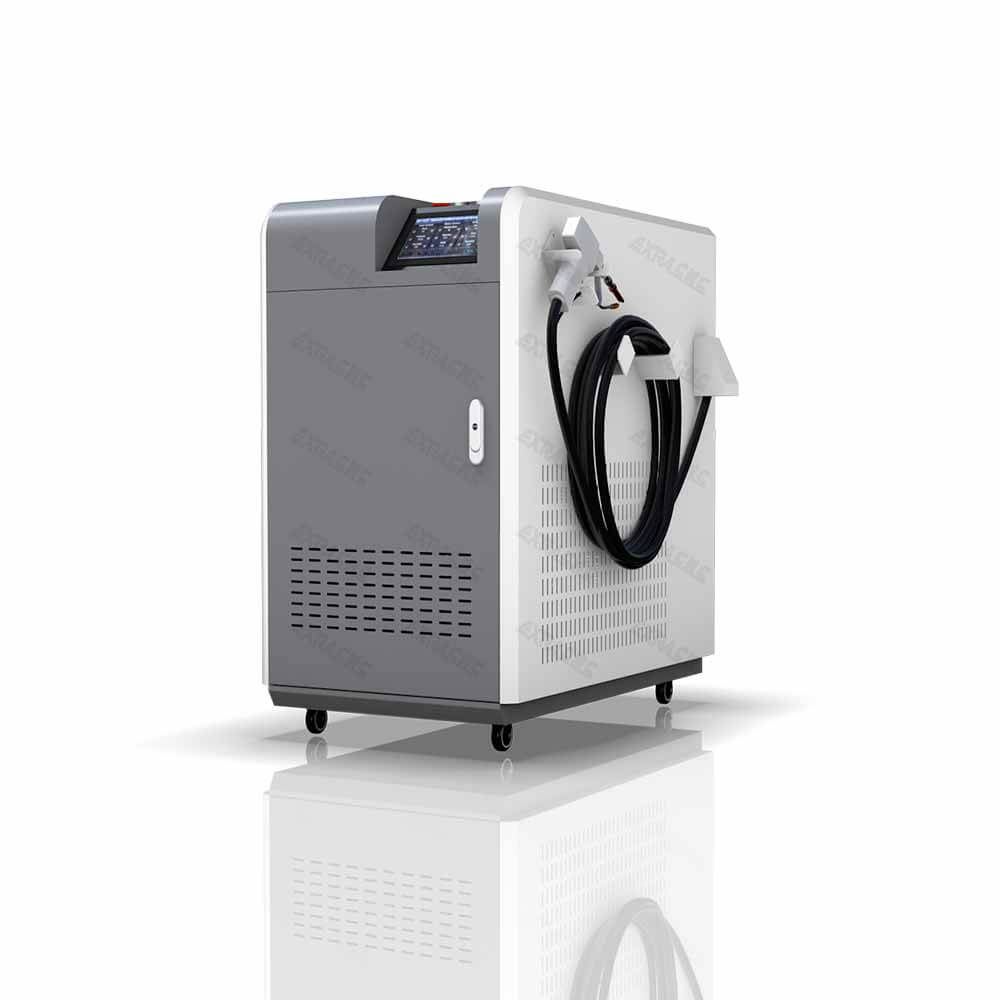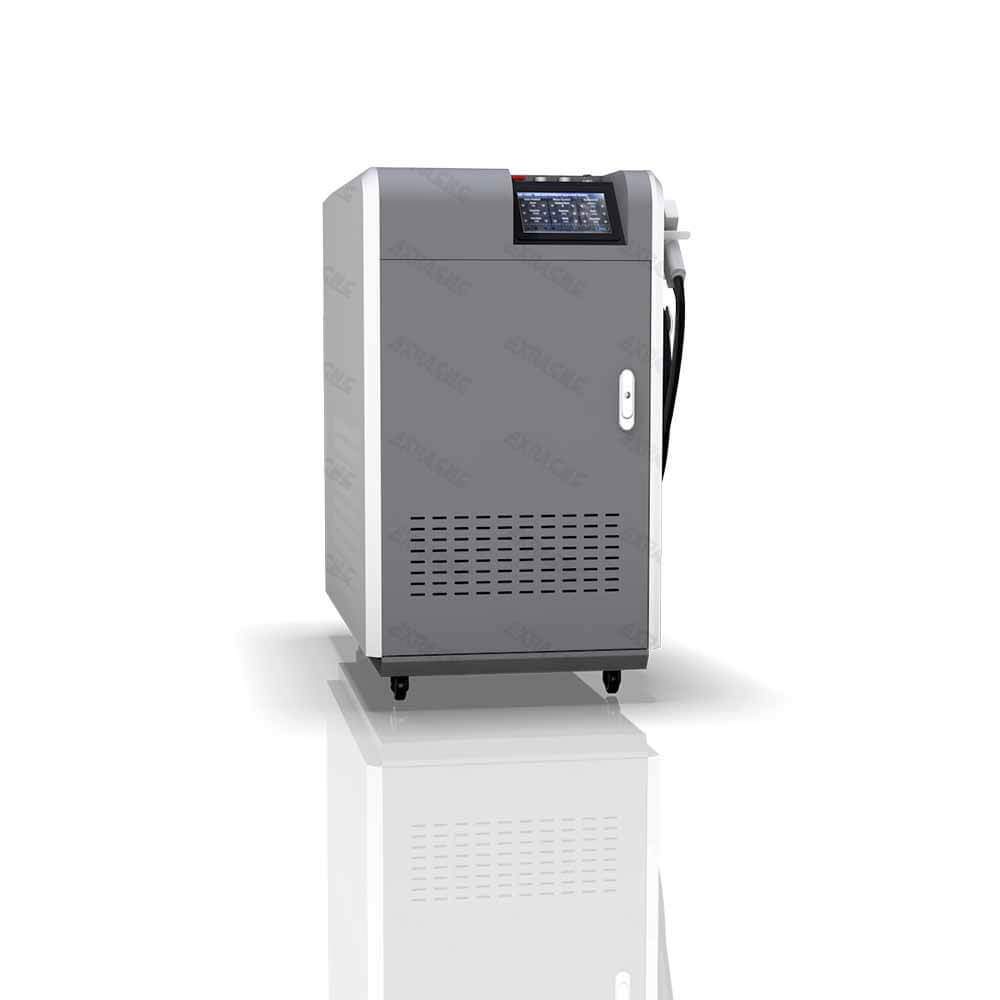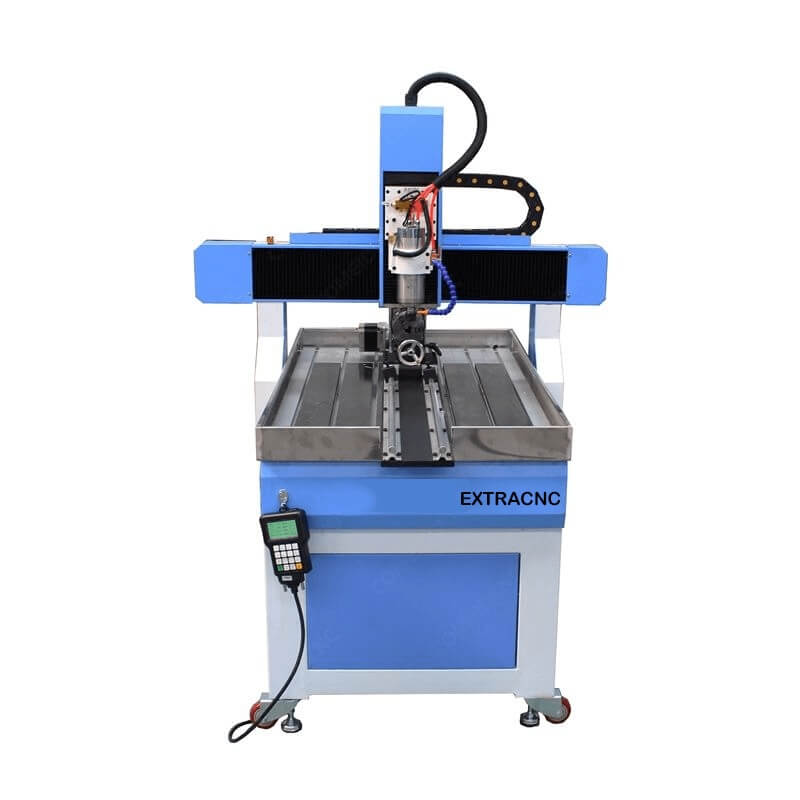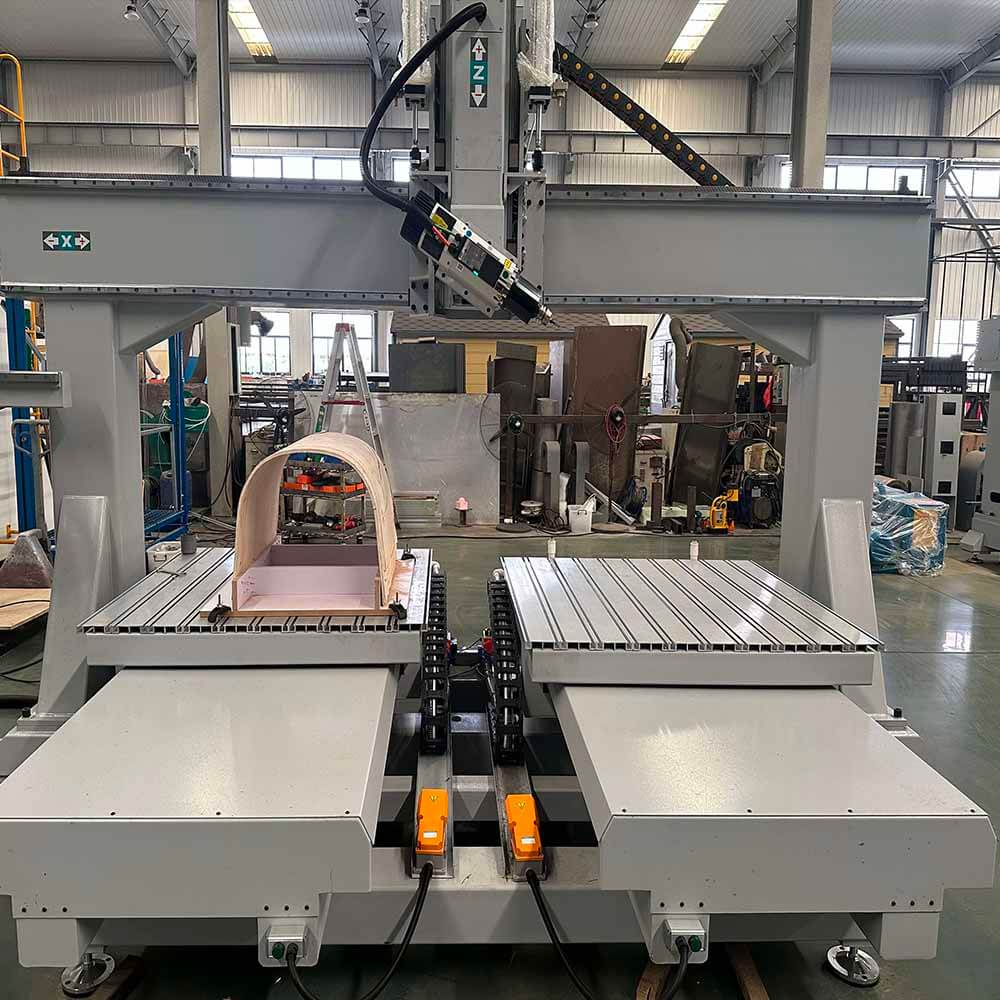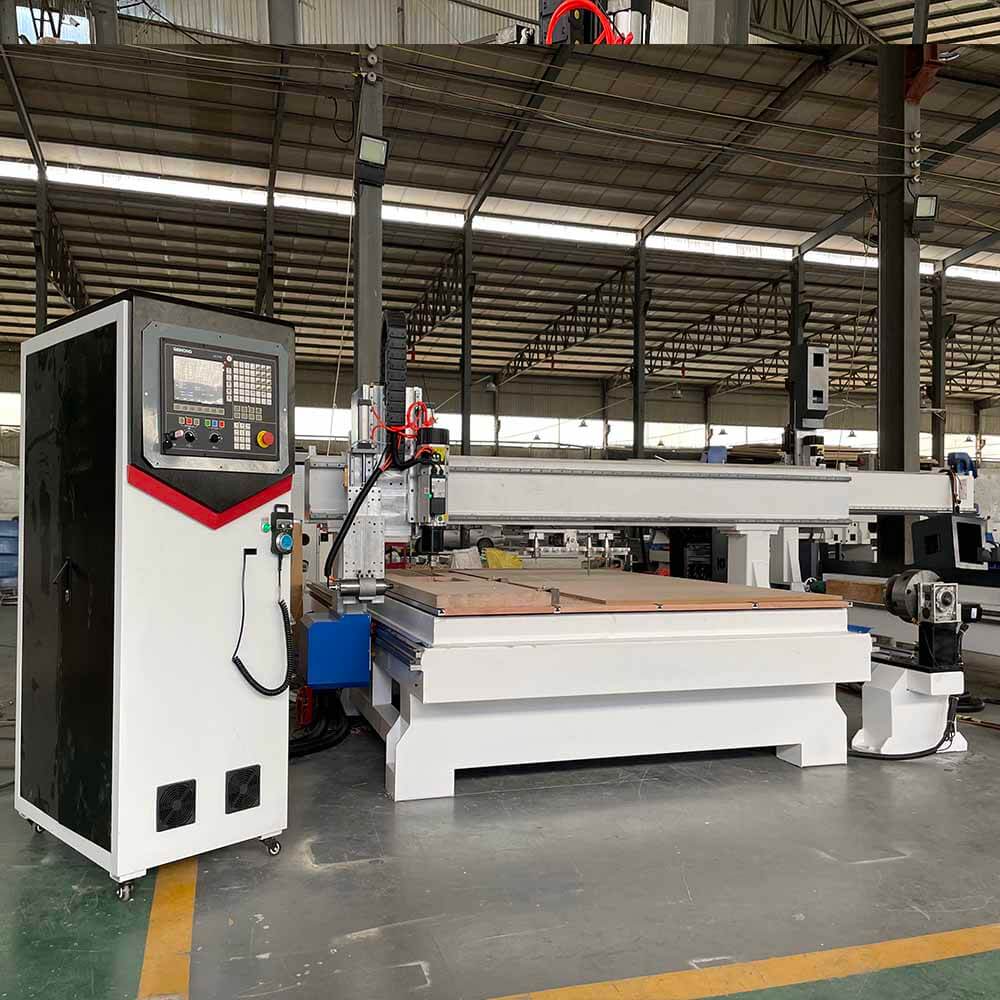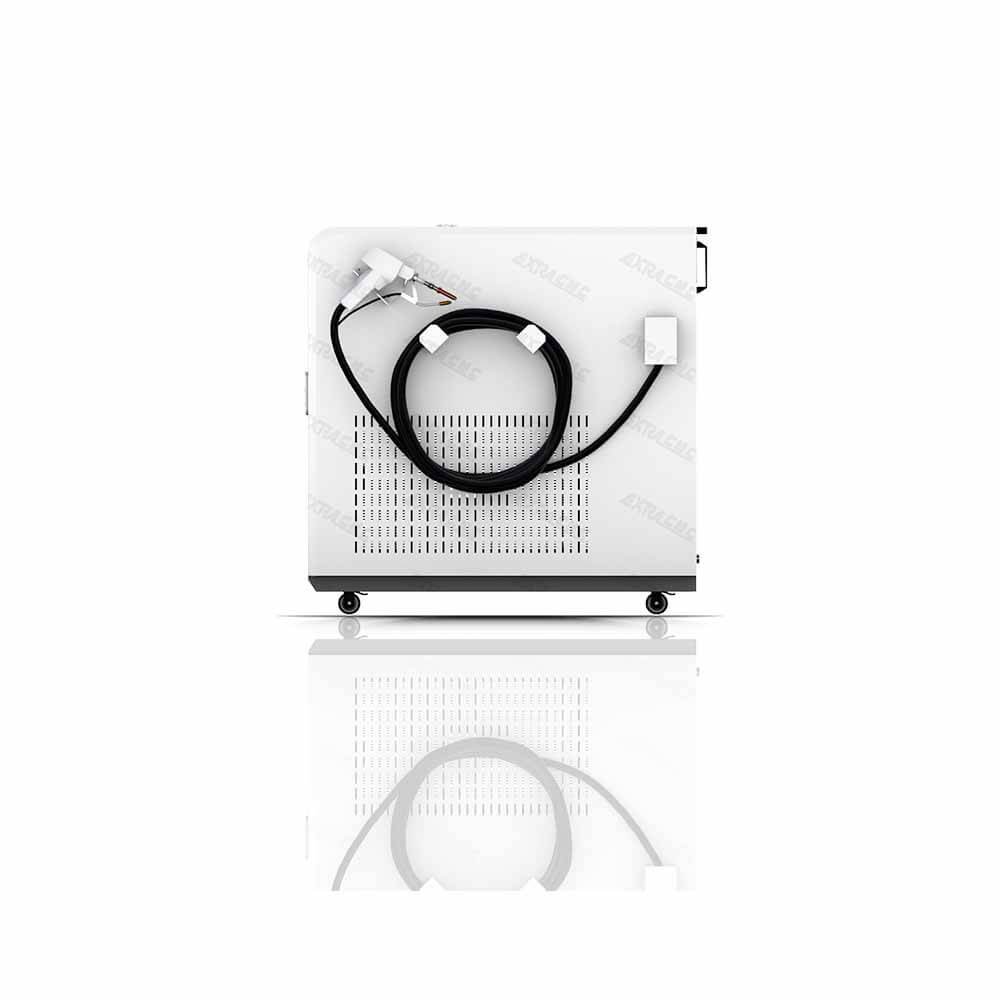
Μηχανή συγκόλλησης με λέιζερ
ΕΝΑ Μηχανή συγκόλλησης με λέιζερ είναι ένα εργαλείο υψηλής ακρίβειας που χρησιμοποιεί εστιασμένες δέσμες λέιζερ για την ένωση υλικών, παρέχοντας ισχυρές, ανθεκτικές συγκολλήσεις με ελάχιστη θερμική παραμόρφωση. Αυτό το μηχάνημα είναι ιδανικό για τη συγκόλληση λεπτών φύλλων, ευαίσθητων εξαρτημάτων και δυσπρόσιτων περιοχών σε ένα ευρύ φάσμα υλικών όπως ανοξείδωτο χάλυβα, αλουμίνιο και τιτάνιο. Η συγκόλληση με λέιζερ προσφέρει ανώτερο έλεγχο της εισερχόμενης θερμότητας, καθιστώντας την εξαιρετική επιλογή για βιομηχανίες όπως η αυτοκινητοβιομηχανία, η αεροδιαστημική και η ηλεκτρονική, όπου η ακρίβεια και η αντοχή είναι κρίσιμες. Προσφέρει γρήγορες ταχύτητες συγκόλλησης, υψηλής ποιότητας συνδέσεις και μπορεί να μειώσει την ανάγκη για διαδικασίες μετά τη συγκόλληση, καθιστώντας την μια οικονομικά αποδοτική λύση για κατασκευή ακριβείας.
Μηχανή συγκόλλησης με λέιζερ: Ακρίβεια, ταχύτητα και απόδοση για τη σύγχρονη κατασκευή
ΕΝΑ μηχανή συγκόλλησης με λέιζερ συνδυάζει τεχνολογία αιχμής με έλεγχο κίνησης υψηλής ακρίβειας για να προσφέρει εξαιρετικά αποτελέσματα σε διάφορους κλάδους, συμπεριλαμβανομένων αυτοκινητοβιομηχανία, αεροδιαστημική, ηλεκτρονική, παραγωγή ιατρικών συσκευών, και μεταλλική κατασκευήΜε την απρόσκοπτη ενσωμάτωση τεχνολογία λέιζερ Με αυτοματοποιημένες διαδικασίες συγκόλλησης, αυτά τα μηχανήματα επιτρέπουν ακριβείς συγκολλήσεις υψηλής αντοχής, δίνοντας τη δυνατότητα στους κατασκευαστές να επιτύχουν ανώτερη ποιότητα, μειωμένες ζώνες που επηρεάζονται από τη θερμότητα και βελτιωμένη αποδοτικότητα παραγωγής.
Ποιος χρησιμοποιεί μηχανή συγκόλλησης με λέιζερ;
Μηχανές συγκόλλησης με λέιζερ χρησιμοποιούνται ευρέως σε πολλούς κλάδους, συμπεριλαμβανομένων κατασκευαστές αυτοκινήτων, παραγωγοί ηλεκτρονικών ειδών, αεροδιαστημικές εταιρείες, κατασκευαστές ιατρικών συσκευών, και κατασκευαστές μετάλλωνΑυτές οι βιομηχανίες βασίζονται στην ακρίβεια και την επαναληψιμότητα που προσφέρει η συγκόλληση με λέιζερ, καθιστώντας την ιδανική για τη συγκόλληση μικρών εξαρτημάτων, λεπτών εξαρτημάτων και περίπλοκων σχεδίων όπου οι παραδοσιακές μέθοδοι συγκόλλησης ενδέχεται να μην επαρκούν. Συγκόλληση ακριβείας Στην παραγωγή μικρής κλίμακας, στα προσαρμοσμένα εξαρτήματα και στην κατασκευή μεγάλου όγκου, όλα επωφελούνται από τις προηγμένες δυνατότητες μιας μηχανής συγκόλλησης με λέιζερ.
Τι είναι μια μηχανή συγκόλλησης με λέιζερ;
ΕΝΑ μηχανή συγκόλλησης με λέιζερ είναι μια συσκευή που χρησιμοποιεί μια εστιασμένη δέσμη λέιζερ για να ενώσει δύο ή περισσότερα μεταλλικά μέρη μαζί με υψηλή ακρίβεια. Η εστιασμένη ενέργεια του λέιζερ λιώνει το υλικό στην ένωση, δημιουργώντας έναν ισχυρό δεσμό που είναι εξαιρετικά ανθεκτικός στην τάση και τη διάβρωση. Αυτός ο τύπος συγκόλλησης είναι ιδανικός για τη δημιουργία καθαρών, ακριβών και υψηλής ποιότητας συγκολλήσεων με ελάχιστη παραμόρφωση. διαδικασία συγκόλλησης με λέιζερ ελέγχεται από έναν υπολογιστή, ο οποίος επιτρέπει την ακριβή κίνηση της δέσμης λέιζερ κατά μήκος των τεμαχίων εργασίας για τη δημιουργία ομοιόμορφων και συνεπών συγκολλήσεων.
Πού Χρησιμοποιείται;
Οι μηχανές συγκόλλησης με λέιζερ χρησιμοποιούνται σε μια ποικιλία εφαρμογών και βιομηχανιών, όπως:
ΑυτοκινητοβιομηχανίαΓια συγκόλληση ανταλλακτικά οχημάτων, πλαίσια, και συστήματα εξάτμισης, η συγκόλληση με λέιζερ προσφέρει υψηλή ακρίβεια και αντοχή τόσο για δομικά όσο και για διακοσμητικά στοιχεία.
ΑεροδιαστημικήΗ συγκόλληση με λέιζερ είναι ζωτικής σημασίας για την αεροδιαστημική βιομηχανία λόγω της ικανότητάς του να συγκολλά ευαίσθητα και πολύπλοκα εξαρτήματα, όπως πτερύγια τουρμπίνας, πλαίσια αεροσκαφών, και εξαρτήματα κινητήρα, με ελάχιστη παραμόρφωση.
ΗλεκτρονικήΗ συγκόλληση με λέιζερ χρησιμοποιείται για την ένωση μικρών ηλεκτρονικά εξαρτήματα, μπαταρίες, και κυκλώματα, όπου η ακρίβεια και η ακρίβεια είναι απαραίτητες.
Παραγωγή ιατρικών συσκευών: Στο βιομηχανία ιατρικών συσκευών, η συγκόλληση με λέιζερ χρησιμοποιείται για την κατασκευή συσκευών όπως εμφυτεύματα, χειρουργικά εργαλεία, και ιατρικές σωληνώσεις με καθαρές, ισχυρές και βιοσυμβατές συγκολλήσεις.
Μεταλλικές κατασκευέςΗ συγκόλληση με λέιζερ χρησιμοποιείται ευρέως σε μεταλλουργεία για τη σύνδεση μεταλλικών φύλλων, σωλήνων και εξαρτημάτων με ακριβή και υψηλής ποιότητας αποτελέσματα.
Πότε έγιναν απαραίτητες οι μηχανές συγκόλλησης με λέιζερ;
Η εισαγωγή του τεχνολογία συγκόλλησης με λέιζερ στα τέλη του 20ού αιώνα έφερε επανάσταση στη βιομηχανία συγκόλλησης. Καθώς αυξάνονταν οι απαιτήσεις για υψηλότερη ακρίβεια, ταχύτητα και αποτελεσματικότητα στις διαδικασίες παραγωγής, οι μηχανές συγκόλλησης με λέιζερ έγιναν γρήγορα απαραίτητες σε βιομηχανίες όπως αυτοκινητοβιομηχανία, ηλεκτρονική, και αεροδιαστημικήΗ δυνατότητα συγκόλλησης ευαίσθητων εξαρτημάτων με ελάχιστη θερμική παραμόρφωση, οι δεσμοί υψηλής αντοχής και οι γρήγοροι χρόνοι επεξεργασίας κατέστησαν αυτά τα μηχανήματα απαραίτητα για τη σύγχρονη κατασκευή.
Γιατί είναι σημαντική μια μηχανή συγκόλλησης με λέιζερ;
Υψηλή ακρίβεια και ακρίβειαΗ συγκόλληση με λέιζερ προσφέρει εξαιρετική ακρίβεια, επιτρέποντας στους κατασκευαστές να ενώνουν μεταλλικά μέρη με ακρίβεια σε επίπεδο μικρομέτρουΑυτό είναι απαραίτητο για εφαρμογές όπως μικρά εξαρτήματα, λεπτές αρθρώσεις, και σύνθετες γεωμετρίες σε βιομηχανίες όπως ηλεκτρονική και αεροδιαστημική.
Μειωμένες Ζώνες που Επηρεάζονται από τη Θερμότητα (HAZ)Σε αντίθεση με τις παραδοσιακές μεθόδους συγκόλλησης, η συγκόλληση με λέιζερ παράγει ελάχιστη θερμότητα, η οποία μειώνει ζώνη που επηρεάζεται από τη θερμότητα (HAZ) και ελαχιστοποιεί τον κίνδυνο παραμόρφωσης του υλικού. Αυτό είναι ιδιαίτερα σημαντικό για τη συγκόλληση λεπτά μέταλλα και ευαίσθητα εξαρτήματα, όπως στο βιομηχανία ιατρικών συσκευών.
Υψηλή ταχύτητα και αποδοτικότητα: Το διαδικασία συγκόλλησης με λέιζερ είναι γρήγορο και εξαιρετικά αποδοτικό, μειώνοντας σημαντικά τον χρόνο παραγωγής και αυξάνοντας την απόδοση. Αυτό το καθιστά ιδανικό για βιομηχανίες που απαιτούν παραγωγή μεγάλου όγκου εξαρτημάτων, όπως αυτοκινητοβιομηχανία και ηλεκτρονική.
Οικονομική αποδοτικότηταΑν και η αρχική επένδυση σε μια μηχανή συγκόλλησης με λέιζερ μπορεί να είναι υψηλότερη από τις παραδοσιακές μεθόδους συγκόλλησης, η μακροπρόθεσμη εξοικονόμηση κόστους είναι σημαντική. Η συγκόλληση με λέιζερ μειώνει τα απόβλητα υλικών, μειώνει την κατανάλωση ενέργειας και βελτιώνει την αποδοτικότητα της παραγωγής, οδηγώντας σε υψηλή απόδοση επένδυσης (ROI).
Ελάχιστη μετεπεξεργασίαΗ συγκόλληση με λέιζερ συνήθως έχει ως αποτέλεσμα καθαρότερες συγκολλήσεις με λιγότερη ανάγκη για μετεπεξεργασία, όπως λείανση, στίλβωση ή φινίρισμα. Αυτό οδηγεί σε μειωμένο κόστος εργασίας και ταχύτερο χρόνο διάθεσης των προϊόντων στην αγορά.
Πώς λειτουργεί μια μηχανή συγκόλλησης με λέιζερ;
Φάση ΣχεδιασμούΗ διαδικασία συγκόλλησης ξεκινά με ένα λεπτομερές σχέδιο, το οποίο δημιουργείται χρησιμοποιώντας CAD (Σχεδίαση με τη βοήθεια υπολογιστή) λογισμικό. Αυτός ο σχεδιασμός μετατρέπεται σε συγκεκριμένες οδηγίες που καθοδηγούν το λέιζερ κατά τη διάρκεια της διαδικασίας συγκόλλησης.
Εστίαση δέσμης λέιζερΤο λέιζερ εστιάζει στην μεταλλική επιφάνεια στην ένωση, λιώνοντας το υλικό. Η εστιασμένη ενέργεια διασφαλίζει ότι η συγκόλληση δημιουργείται με ακριβή έλεγχο του βάθους και του πλάτους της ένωσης.
Διαδικασία συγκόλλησηςΚατά τη διάρκεια της διαδικασίας συγκόλλησης, η δέσμη λέιζερ κινείται κατά μήκος της προκαθορισμένης διαδρομής, λιώνοντας και συντήκοντας τα υλικά μεταξύ τους. Το ελεγχόμενο από υπολογιστή σύστημα διασφαλίζει ομοιόμορφες συγκολλήσεις σε ολόκληρη την επιφάνεια.
Ψύξη και ΣτερεοποίησηΑφού το λέιζερ περάσει πάνω από την ένωση, το υλικό ψύχεται γρήγορα και στερεοποιείται, δημιουργώντας έναν ισχυρό και ανθεκτικό δεσμό. Η ταχεία ψύξη ελαχιστοποιεί επίσης την επηρεαζόμενη από τη θερμότητα ζώνη, διατηρώντας την ακεραιότητα των γύρω υλικών.
Ποιοτικός έλεγχοςΗ επιθεώρηση μετά τη συγκόλληση διασφαλίζει την ποιότητα της συγκόλλησης αξιολογώντας παράγοντες όπως η αντοχή, η εμφάνιση και η ανθεκτικότητα. Προηγμένη αυτοματοποιημένα συστήματα επιθεώρησης χρησιμοποιούνται συχνά για να διασφαλιστεί ότι η συγκόλληση πληροί τα απαιτούμενα πρότυπα.
Πλεονεκτήματα των μηχανών συγκόλλησης με λέιζερ
Ακρίβεια και έλεγχοςΟι μηχανές συγκόλλησης με λέιζερ επιτρέπουν τον ακριβή έλεγχο της συγκόλλησης, παράγοντας συγκολλήσεις υψηλής ποιότητας με ελάχιστη εισροή θερμότητας, καθιστώντας τα ιδανικά για λεπτά μέρη και ευαίσθητα υλικά.
Ελάχιστη παραμόρφωση: Το χαμηλή εισροή θερμότητας ελαχιστοποιεί την παραμόρφωση, η οποία είναι κρίσιμη για εφαρμογές που απαιτούν εξαρτήματα υψηλής ποιότητας και με αυστηρές ανοχές, όπως εξαρτήματα αεροδιαστημικής και ιατρικές συσκευές.
ΕυκαμψίαΗ συγκόλληση με λέιζερ μπορεί να χρησιμοποιηθεί σε μια ποικιλία υλικών, συμπεριλαμβανομένων ανοξείδωτο ατσάλι, αλουμίνιο, χαλκός, και πολύτιμα μέταλλα, καθιστώντας το ευέλικτο για διαφορετικές βιομηχανίες και εφαρμογές.
Υψηλή απόδοσηΗ ταχύτητα της συγκόλλησης με λέιζερ επιτρέπει παραγωγή μεγάλου όγκου σε βιομηχανίες όπως αυτοκινητοβιομηχανία και ηλεκτρονική, όπου οι γρήγοροι χρόνοι παράδοσης και η σταθερή ποιότητα είναι απαραίτητες.
Ενσωμάτωση ΑυτοματισμούΟι μηχανές συγκόλλησης με λέιζερ μπορούν εύκολα να ενσωματωθούν σε πλήρως αυτοματοποιημένες γραμμές παραγωγής, επιτρέποντας συνεχής παραγωγή με ελάχιστη ανθρώπινη παρέμβαση.
Σύναψη
Οι μηχανές συγκόλλησης με λέιζερ έχουν γίνει ένα απαραίτητο εργαλείο στη σύγχρονη κατασκευή, προσφέροντας απαράμιλλη ακρίβεια, ταχύτητα και αποτελεσματικότητα. αυτοκινητοβιομηχανική παραγωγή και αεροδιαστημική να ηλεκτρονική και ιατρικές συσκευές, αυτά τα μηχανήματα παρέχουν τη δυνατότητα δημιουργίας υψηλής ποιότητας, ανθεκτικών συγκολλήσεων με ελάχιστη θερμική παραμόρφωση. Με τα σχέση κόστους-αποτελεσματικότητας, μειωμένες ανάγκες μετεπεξεργασίας, και αυξημένη παραγωγικότητα, μηχανές συγκόλλησης με λέιζερ είναι απαραίτητα για βιομηχανίες που απαιτούν συνδέσεις υψηλής ακρίβειας και υψηλής αντοχής.
Για εταιρείες που επιθυμούν να παραμείνουν ανταγωνιστικές και να ανταποκριθούν στις αυξανόμενες απαιτήσεις για υψηλής ποιότητας, εξατομικευμένα προϊόντα, η επένδυση σε ένα μηχανή συγκόλλησης με λέιζερ προσφέρει σημαντικά μακροπρόθεσμα οφέλη, όπως ταχύτερους χρόνους παραγωγής, μειωμένη σπατάλη υλικών και ανώτερη ποιότητα συγκόλλησης.
